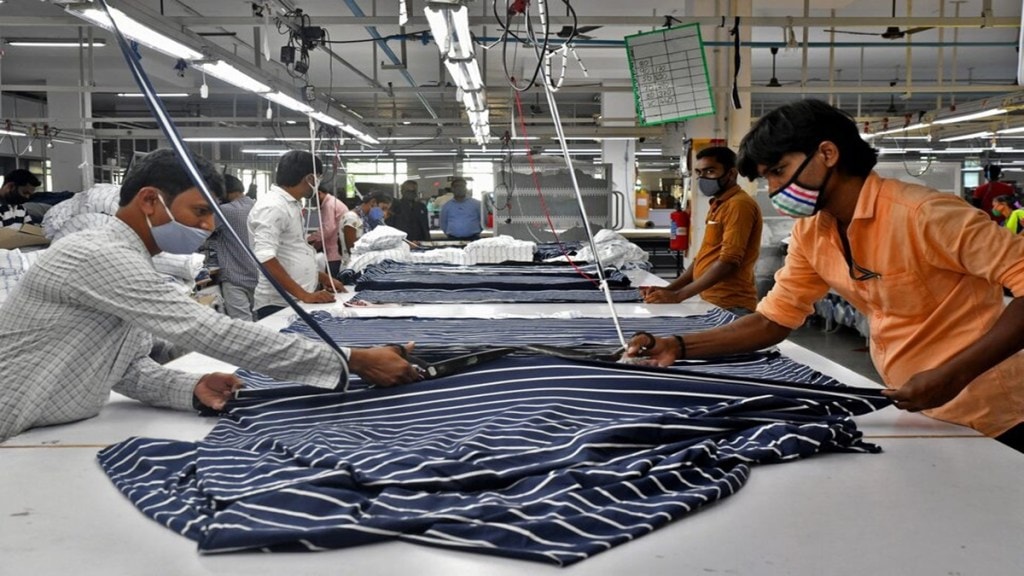US President Donald Trump has announced a flat 26 per cent tariff on Indian goods with some exemptions and according to analysts, this comes as a double-edged sword for India’s textile sector. While the increased tariff is likely to impact exports with the US being a major market for Indian textiles, it also gives India’s textile industry an advantage as its competitors like Vietnam, Bangladesh and China will face higher tariffs.
For the record, Vietnam is slapped with a staggering 46 per cent tariff on its textile exports, while Bangladesh and China are subject to 37 per cent and 34 per cent, respectively. Since textiles account for only 2 per cent of India’s GDP, whereas it contributes 11 per cent in Bangladesh and 15 per cent in Vietnam, the overall economic impact on India may be less severe. “With higher levies on other countries, India is better off,” said Deven Choksey Research.
Manish Jain, Chief Strategy Officer & Director, Mirae Asset Capital Markets, said, “India will have two-way impact of these reciprocal tariffs, 1st higher tariff on competing nations to support market share gains as China, Bangladesh and Vietnam are levied at much higher rate of 34 per cent, 47 per cent and 46 per cent respectively compared to 26 per cent on India. Secondly, the increase in prices to end consumers will reduce the overall demand, shrinking the market size.” Textiles typically have a price elasticity of demand between -1.2 to -2.0, meaning a 10 per cent price increase leads to a 12-20 per cent decrease in quantity demanded.
Trump announced sweeping new tariffs on countries based on US trade deficits along with a universal 10 per cent tariffs on all imports to the US. The new announcement will affect more than 180 countries with India, in particular, facing a 26 per cent “discounted reciprocal tariff”.
India’s textile sector still better off
India is already doing Bilateral Trade talks with the US which could potentially lower the tariffs in near future, but timeline is uncertain. While the reciprocal tariff on India is negative for domestic exporters but higher tariffs on China (20 per cent existing + 34 per cent new), Mexico and Canada will give opportunities to Indian players to increase their market share in the US. GTRI Founder Ajay Srivastava agreed, “One key area of opportunity is the textile and garment industry. The high tariffs imposed on Chinese and Bangladeshi textile exports create an opportunity for Indian manufacturers to increase market share, attract new production setups, and expand exports to the US.” He further added that high tariffs on Chinese and Bangladesh exports create room for Indian textile manufacturers to gain market share, attract relocated production, and increase exports to the US. Also, with India having a strong foundation in textile production and comparatively lower tariff rates, the sector is expected to witness higher global demand and new investments.
Gautam Shahi, Director, Crisil Ratings, said, “The US administration has levied a 27 per cent reciprocal tariff on home textiles and readymade garments from India. This is lower than the levies on other major textile exporting countries — China (54 per cent), Vietnam (46 per cent), Bangladesh (37 per cent) and Pakistan (30 per cent) — and could enhance India’s relative competitiveness and present an opportunity to increase its share of textile exports to the US. Higher tariffs are likely to be passed through to consumers to an extent, leading to an increase in the prices of end products, which could dampen the demand over the medium term. This, along with any potential reversal in tariffs imposed on India and the competing nations, will remain a key monitorable.”
How can tariffs adversely impact India’s textile sector?
“While India’s gross exports to the US are relatively low compared to other emerging market peers—as Goldman Sachs points out—and Fitch rightly notes India’s limited reliance on external demand, this move still sends ripples through key export-oriented sectors such as textiles, Jewellery and engineering goods. These industries may face immediate margin pressure and disruptions in supply chains,” said Harsh Bhuta, Partner at Bhuta Shah & Co LLP.
In terms of the apparel and textile sector, the US market accounts for nearly 28 per cent of these exports—approximately $10 billion annually— and the recently announced tariff has placed immense pressure on industries already grappling with cost escalations and competitive challenges, said Karthick Jonagadla, Smallcase Manager and Founder & CEO, Quantace Research.
He further maintained, “A smart strategic Indian response, a ‘zero-for-zero tariff policy’ might prove beneficial for sectors like pharmaceuticals, gems & jewelry, and potentially textiles & garments. The tariffs may create strategic opportunities for India to gain market share in specific sectors.”
The Apparel Export Promotion Council (AEPC), in response to the tariff, has approached the Ministry of Textiles, advocating for a ‘zero for zero’ duty policy on textiles and apparel. This strategy involves India reducing its textile tariffs to zero, with the expectation that the US would reciprocate, thereby restoring competitiveness to Indian textile exports.
Historically, the US has maintained relatively low average tariffs on Indian goods, with a trade-weighted average of about 2.2 per cent to 2.8 per cent across all imports (per WTO and GTRI data).
